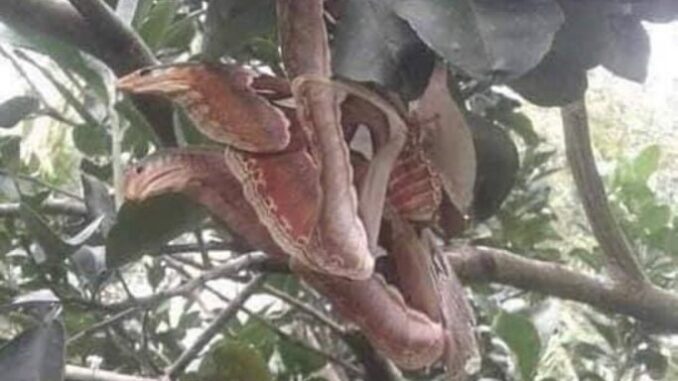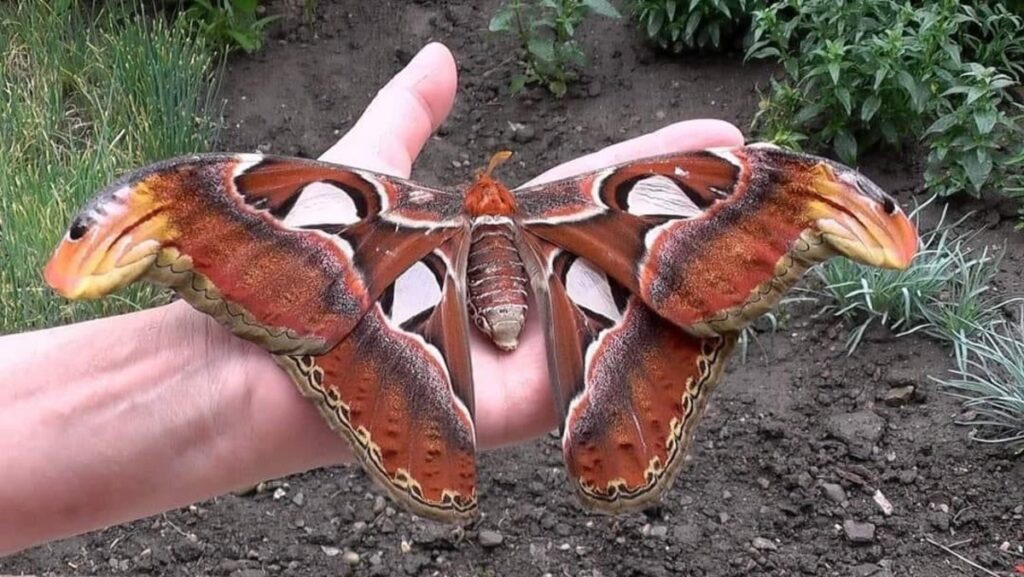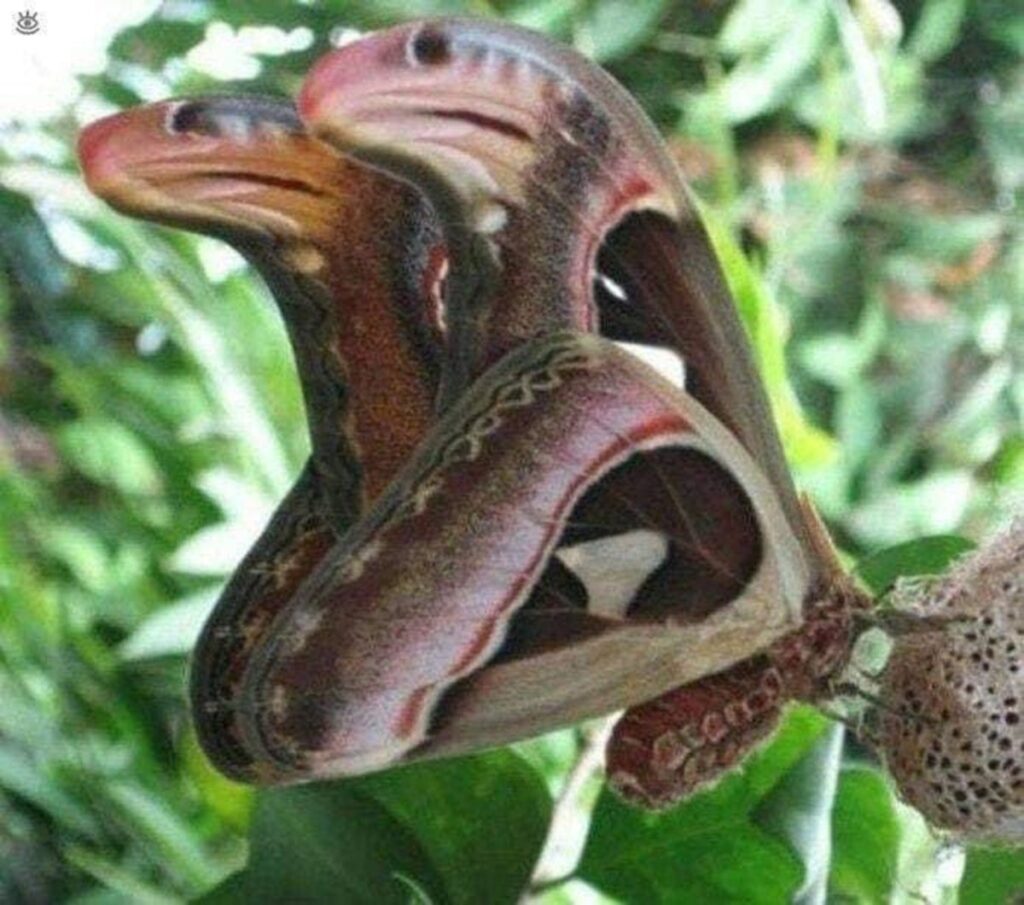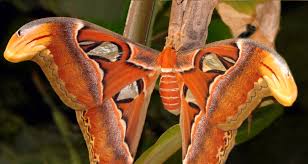
In the wild realm of insects, the Atlas moth is renowned not only for its stunning appearance but also for its remarkable survival strategies. This unique creature has evolved with wings that closely resemble the head of a venomous snake, a clever adaptation that aids in its defense against threats.
The Atlas moth displays mesmerizing patterns and markings, with wing tips that mimic the curved shape of a cobra’s head. When threatened, it further enhances this disguise by dropping to the ground and spreading its wings in a motion that strikingly resembles a snake’s head and neck.

This intriguing resemblance has earned the moth the nickname “snake’s head moth” in Cantonese. Native to the tropical and subtropical forests of South East Asia, the Atlas moth is known for its impressive size, boasting the largest wingspan of any moth on the planet, particularly the female which can span up to 12 inches (30 cm).
The name “Atlas moth” is thought to originate from the patterns on its wings, which some believe resemble maps, or from the Titan Atlas of Greek mythology, known for carrying the sky on his shoulders, symbolizing the moth’s enormous wingspan.

Female Atlas moths, larger than males, attract mates by releasing pheromones, detected by males with their long, feathery antennae. After mating, the moths lay eggs, giving rise to bluish-green caterpillars that feed voraciously on Jamaican cherry trees and citrus fruits before cocooning and entering the pupal stage.
Upon adulthood, male Atlas moths do not feed and rely on stored fat reserves. They mate quickly and have a short lifespan.

Nature’s mimicry, such as the Atlas moth’s imitation of a snake’s head, continues to inspire awe and admiration for its ingenuity in adapting to its environment and captivating observers with its beauty and intelligence.

WATCH THE VIDEO BELOW:
Leave a Reply